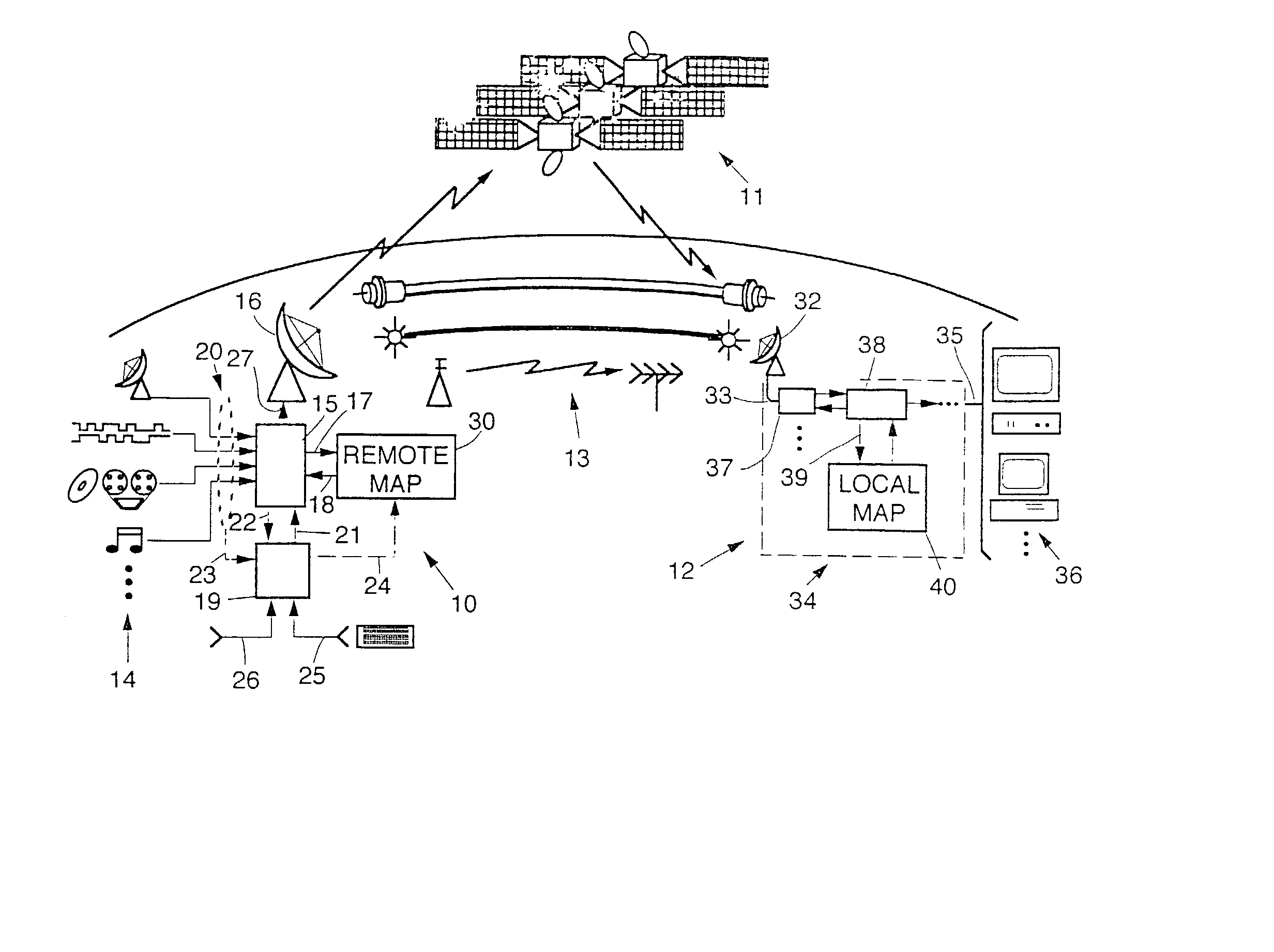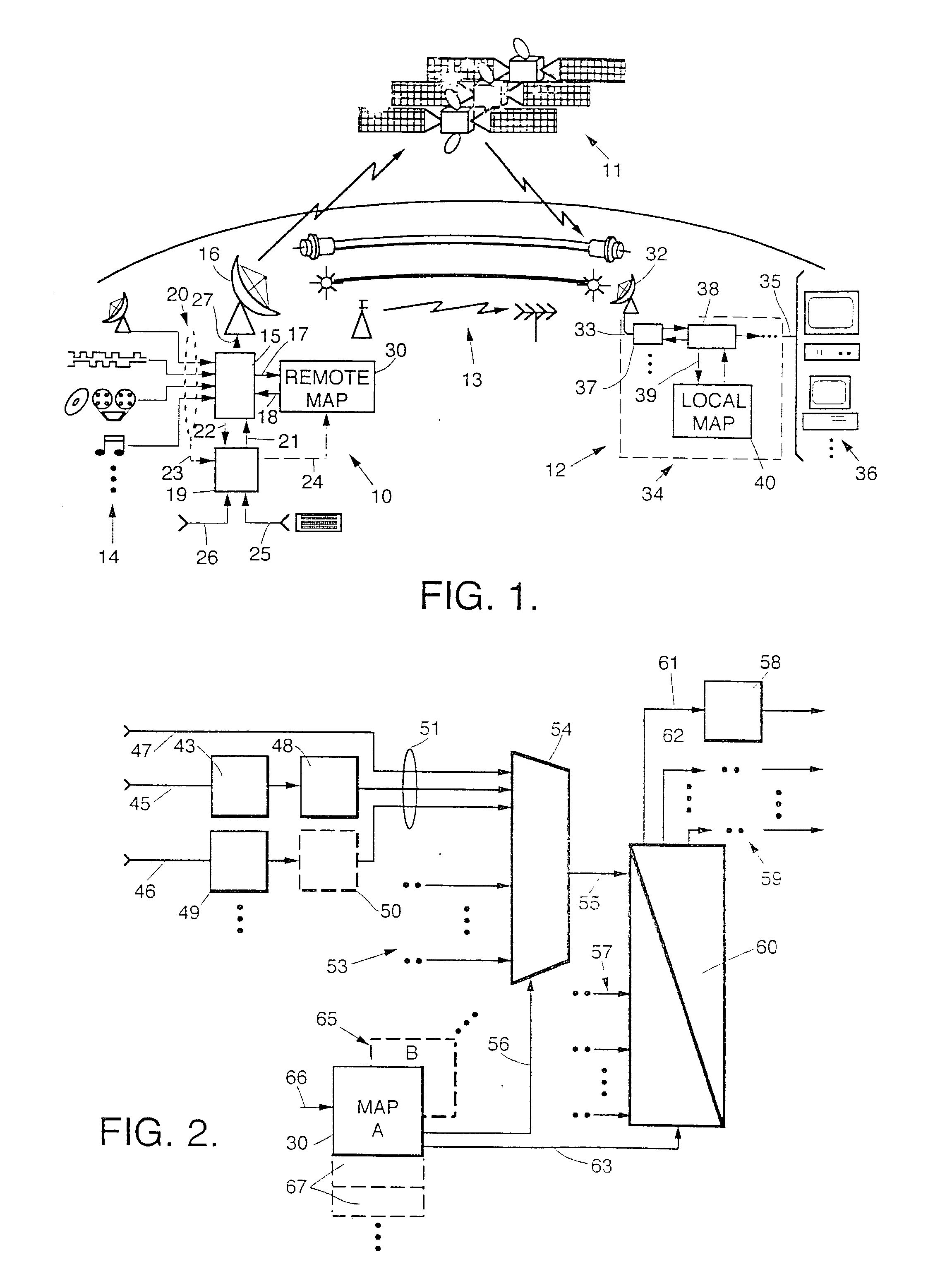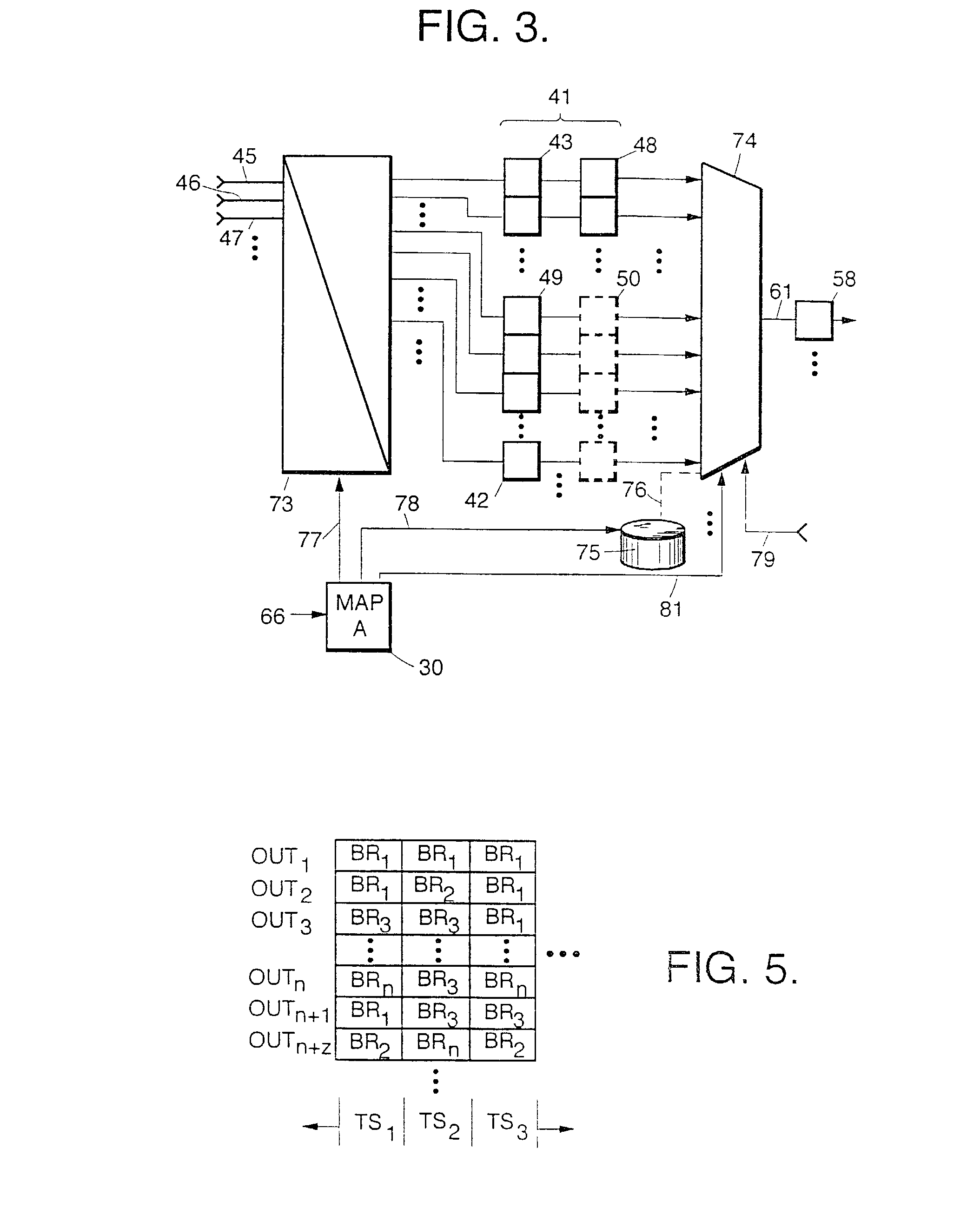Dynamic mapping of broadcast resources
a dynamic mapping and broadcast resource technology, applied in the field of high data rate information signal processing, can solve the problems of limited information carrying capacity of any data network, available bandwidth, processing and transmission elements, etc., and achieve the effect of reducing time delays and overhead requirements, eliminating at least some repetitive or redundant map information transmissions, and reducing transmissions
- Summary
- Abstract
- Description
- Claims
- Application Information
AI Technical Summary
Benefits of technology
Problems solved by technology
Method used
Image
Examples
Embodiment Construction
[0047] FIG. 1 illustrates a representative communication system embodying elements of the present invention. In particular, a direct broadcast satellite (DBS) system is illustrated, including ground-based processing and uplink facilities 10, a space relay segment comprising one or more satellites 11 (preferably in geosynchronous orbit), and one or more (preferably a multiplicity) of ground-based receiving stations 12. It should be understood, however, that alternative transmission and broadcasting methods, utilizing other space or ground-based media 13 such as cable, optical fiber, or various wireless systems, could benefit from implementation of the present invention.
[0048] The ground-based processing and uplink facility 10 may include main processing equipment 15 for receiving program inputs and generating appropriate output signals 27 for transmission to the satellites 11 by means of an uplink antenna 16. In a high capacity DBS system, a large number of individual program streams...
PUM
 Login to View More
Login to View More Abstract
Description
Claims
Application Information
 Login to View More
Login to View More - R&D
- Intellectual Property
- Life Sciences
- Materials
- Tech Scout
- Unparalleled Data Quality
- Higher Quality Content
- 60% Fewer Hallucinations
Browse by: Latest US Patents, China's latest patents, Technical Efficacy Thesaurus, Application Domain, Technology Topic, Popular Technical Reports.
© 2025 PatSnap. All rights reserved.Legal|Privacy policy|Modern Slavery Act Transparency Statement|Sitemap|About US| Contact US: help@patsnap.com



